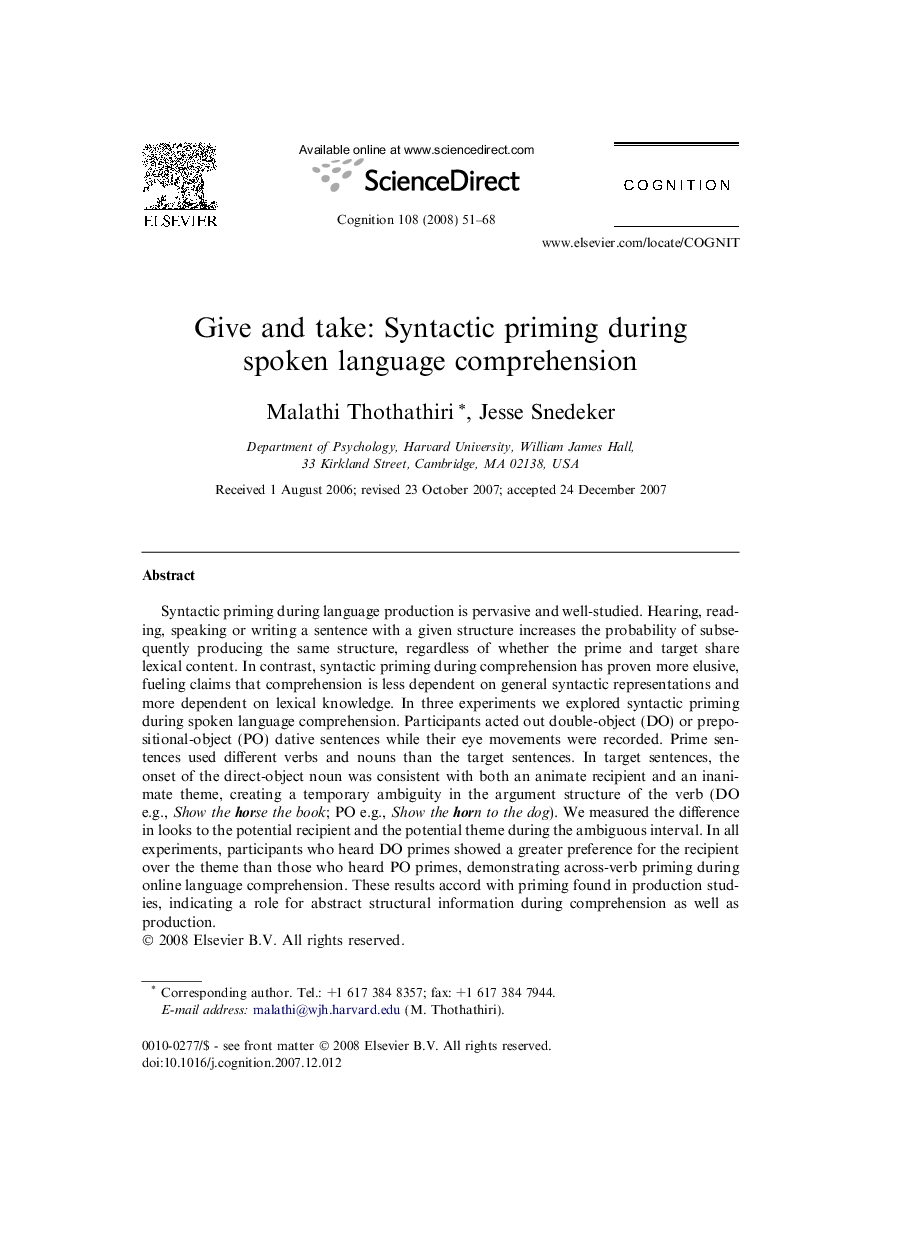| Article ID | Journal | Published Year | Pages | File Type |
|---|---|---|---|---|
| 926679 | Cognition | 2008 | 18 Pages |
Syntactic priming during language production is pervasive and well-studied. Hearing, reading, speaking or writing a sentence with a given structure increases the probability of subsequently producing the same structure, regardless of whether the prime and target share lexical content. In contrast, syntactic priming during comprehension has proven more elusive, fueling claims that comprehension is less dependent on general syntactic representations and more dependent on lexical knowledge. In three experiments we explored syntactic priming during spoken language comprehension. Participants acted out double-object (DO) or prepositional-object (PO) dative sentences while their eye movements were recorded. Prime sentences used different verbs and nouns than the target sentences. In target sentences, the onset of the direct-object noun was consistent with both an animate recipient and an inanimate theme, creating a temporary ambiguity in the argument structure of the verb (DO e.g., Show the horse the book; PO e.g., Show the horn to the dog). We measured the difference in looks to the potential recipient and the potential theme during the ambiguous interval. In all experiments, participants who heard DO primes showed a greater preference for the recipient over the theme than those who heard PO primes, demonstrating across-verb priming during online language comprehension. These results accord with priming found in production studies, indicating a role for abstract structural information during comprehension as well as production.
